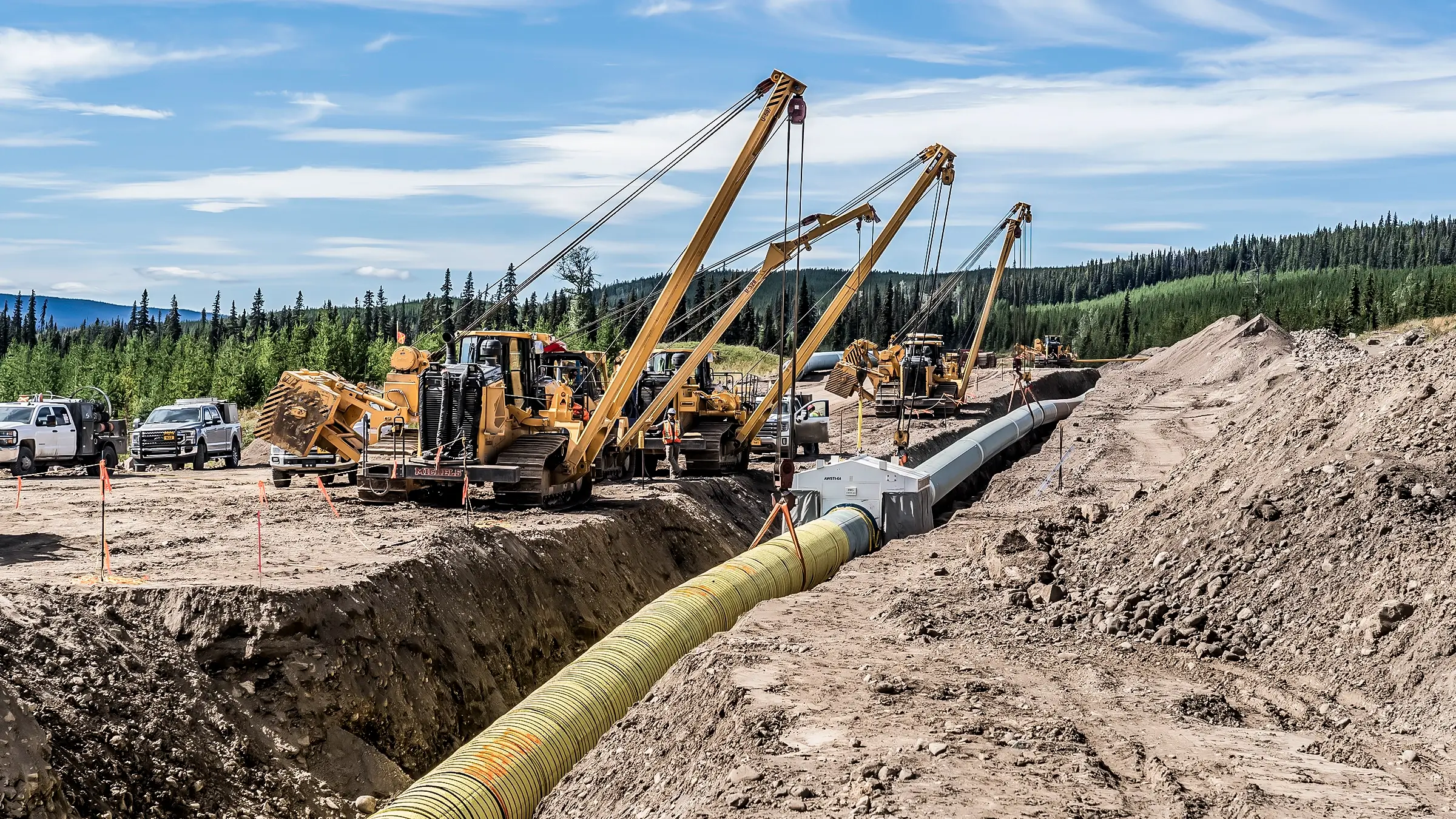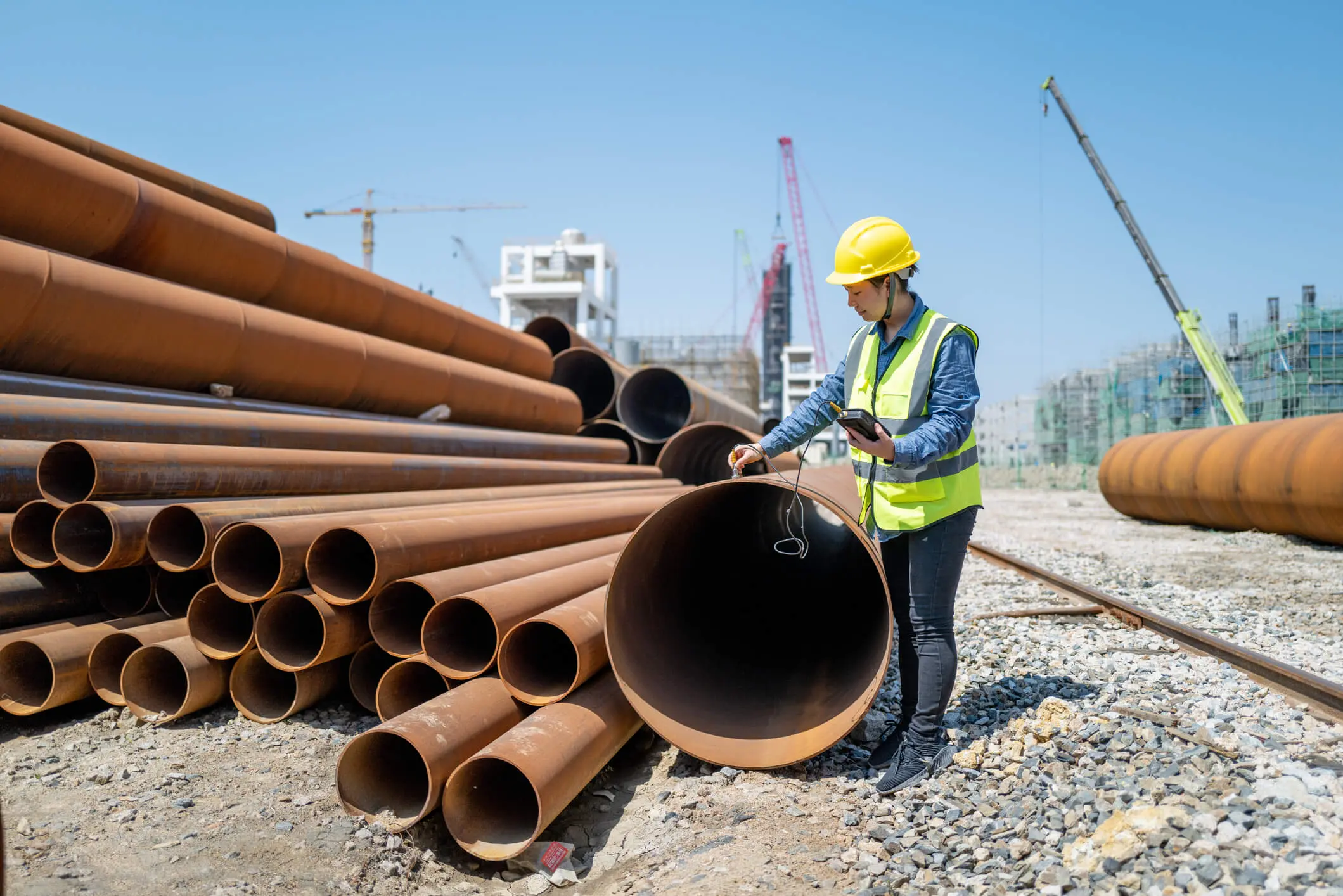The Role of Creek Pipe Midland in Next-Gen Pipeline Monitoring Systems
Wiki Article
Introducing the Newest Developments in Pipes for Efficient Water Management
The evolution of pipeline modern technology is improving water management strategies. Recent technologies, especially in smart sensor innovation and leakage detection systems, promise improved efficiency and sustainability. These advancements make it possible for real-time monitoring and predictive maintenance, dealing with crucial water challenges. As communities venture for strength, the duty of environment-friendly products ends up being progressively considerable - Creek Pipe Company. What other innovations are on the horizon that could additionally transform our approach to water resource monitoring?Advancements in Smart Sensing Unit Innovation
As water administration systems end up being increasingly complex, improvements in wise sensor innovation play a crucial role in boosting effectiveness and sustainability. These sensing units enable real-time tracking of water quality, flow rates, and pressure levels, providing crucial data for effective management. By integrating Net of Things (IoT) capacities, clever sensing units assist in remote access and information analytics, permitting operators to make informed choices swiftly.Moreover, predictive upkeep becomes feasible through making use of sophisticated algorithms that analyze sensor information to anticipate possible failures before they occur. This proactive approach minimizes downtime and reduces repair work expenses. Furthermore, wise sensors add to the preservation of water resources by discovering leakages and abnormalities in the system, making certain timely activity is required to mitigate waste. Overall, the execution of clever sensor innovation in water management pipes notes a significant action towards enhancing source usage and advertising ecological sustainability.Eco-Friendly Materials for Sustainable Pipelines
Innovative methods in water monitoring pipes increasingly incorporate eco-friendly products to improve sustainability. These products objective to reduce environmental impact while preserving sturdiness and efficiency. Naturally degradable plastics, for example, are gaining traction as feasible options to conventional PVC, reducing long-lasting waste in land fills. Additionally, recycled materials, such as recovered rubber and metal composites, are being utilized to create robust pipeline systems that significantly lower carbon footprints.Moreover, bio-based products derived from renewable energies are emerging as encouraging alternatives, offering both durability and lowered reliance on nonrenewable fuel sources. Makers are also exploring ingenious coatings that improve corrosion resistance while staying ecologically benign. These innovations not only advertise a circular economic situation but additionally line up with international sustainability objectives. As water deficiency ends up being a pushing concern, the fostering of environment-friendly products in pipeline building stands for a crucial step in the direction of liable water administration and source conservation.
Real-Time Monitoring and Data Analytics
While standard water administration systems typically depend on regular analyses, the integration of real-time surveillance and data analytics has changed the landscape of pipeline administration. This innovative strategy makes it possible for drivers to continually track water quality, flow, and pressure, facilitating instant responses to prospective issues - Creek Pipe Company LLC. By leveraging sophisticated sensors and IoT modern technology, information is gathered and evaluated instantly, providing workable insights that enhance decision-making processes.Real-time analytics not just boosts operational performance yet additionally helps in resource allotment, guaranteeing that water distribution is optimized. Anticipating analytics can anticipate demand patterns, enabling for positive steps to be applied, thus minimizing waste and enhancing sustainability efforts. The ability to envision data through control panels aids in identifying anomalies and fads, which is essential for keeping the honesty of water supply systems. This shift towards real-time surveillance stands for a substantial development in making sure the efficiency and sustainability of water management pipes.Developments in Leakage Detection Solutions
The surge of real-time monitoring has led the method for improvements in leak detection systems within water administration pipelines. Modern modern technologies, consisting of acoustic sensing units and fiber optic cords, enable drivers to determine leaks with unmatched accuracy. Acoustic sensing units, for instance, detect audio waves created by running away water, permitting immediate place pinpointing. On the other hand, fiber optic systems use temperature changes along the pipeline to reveal abnormalities indicative of leaks.Additionally, machine understanding formulas are being employed to evaluate data collected from these sensors, enhancing anticipating maintenance capabilities. By processing historical data and recognizing patterns, these systems can anticipate potential leak places before they occur, minimizing water loss and decreasing repair costs.Furthermore, combination with geographical info systems (GIS) allows for better visualization and administration of pipe networks, enhancing the response to identified leaks. Jointly, these advancements represent a transformative change in just how water monitoring systems attend to leak discovery.Enhanced Resilience and Durability of Pipeline Products
Developments in pipe products are greatly enhancing the toughness and durability of water management systems. Innovative materials, such as high-density polyethylene (HDPE) and strengthened concrete, are verifying to be much more Creek Pipe Pipeline Construction immune to rust, pressure, and environmental stressors. These modern materials not only prolong the life expectancy of pipes yet additionally minimize maintenance prices and the frequency of repairs.Additionally, developments in composite materials, which integrate various materials to maximize performance, are being utilized for their exceptional strength-to-weight ratio and flexibility. This makes it possible for pipelines to much better endure severe weather and ground movements.Moreover, the intro of safety coatings better improves the durability of pipes against chemical degradation and physical wear. Because of this, water administration systems are ending up being much more dependable and lasting, ensuring the effective delivery of water resources while minimizing the environmental impact associated with constant pipe replacements.Combination of IoT in Water Distribution Networks
As water circulation networks develop, the integration of the Internet of Things (IoT) is changing the method water resources are taken care of and kept track of. Smart sensing units and connected devices make it possible for real-time information collection on water circulation, quality, and pressure, helping with aggressive management of infrastructure. This advancement permits prompt detection of abnormalities and leaks, minimizing water loss and minimizing functional costs.Furthermore, IoT innovation sustains anticipating upkeep by examining use patterns, which assists energies prepare repair work and upgrades more effectively. Enhanced interaction between devices warranties smooth information transmission, permitting enhanced decision-making based upon accurate, current information.Additionally, the combination of IoT cultivates water conservation efforts by providing customers with understandings into their usage practices, urging even more liable use. Generally, the IoT changes water distribution networks, advertising performance and sustainability in water management methods.Situation Studies: Success Stories in Water Monitoring Solutions
Various towns and organizations have successfully executed innovative water monitoring solutions, showcasing the efficiency of modern innovations in dealing with water scarcity and circulation challenges. One noteworthy instance is the city of San Diego, which integrated advanced metering facilities (AMI) to monitor water usage in real-time, resulting in a 10% decrease in usage. Creek Pipe Company. Likewise, the water authority in Cape Town adopted a smart leak discovery system that determined and repaired leakages rapidly, significantly minimizing water loss during the serious drought of 2017. In Australia, using recycled water supply in urban locations has shown successful, permitting lasting watering practices and lowered need on drinkable water resources. These study highlight that by leveraging technology and cutting-edge approaches, areas can improve their water management techniques, making certain long-lasting sustainability and resilience despite growing water challengesFrequently Asked Concerns
Exactly how Do These Developments Effect Water Utility Costs?
The advancements in pipeline technology greatly lower water loss and functional inadequacies. Water utilities experience reduced upkeep and production prices, ultimately leading to reduced costs for customers and improved sustainability in water management techniques.What Are the Environmental Impacts of Pipe Installation?
The environmental impacts of pipeline installment can include environment disturbance, soil erosion, and possible water contamination. Nevertheless, contemporary strategies aim to alleviate these results, advertising sustainable techniques in building and construction and long-term eco-friendly conservation.Exist Federal Government Regulations Affecting Pipeline Innovations?

Federal government policies significantly affect pipeline innovations, mandating compliance with ecological standards and security methods. These guidelines aim to alleviate environmental threats while promoting developments in innovation, eventually shaping the future of pipeline facilities and water management methods.

Just How Can Consumers Gain From These Pipe Developments?
Customers can profit from these pipeline improvements through boosted water quality, minimized expenses, boosted integrity, and increased access to tidy water. Technologies result in a lot more effective source monitoring, inevitably fostering lasting methods within areas.What Future Patterns Can We Expect in Water Administration Pipelines?
Future patterns in water management pipelines may include raised automation, smart monitoring innovations, and sustainable materials. These technologies intend to enhance efficiency, minimize leaks, and improve general water quality, making sure source conservation for future generations. As water distribution networks evolve, the assimilation of the Web of Things (IoT) is changing the way water sources are taken care of and kept an eye on. Numerous municipalities and organizations have successfully executed innovative water management services, showcasing the effectiveness of contemporary technologies in resolving water scarcity and distribution difficulties. The water authority in Cape Town took on a smart leak discovery system that identified and repaired leakages promptly, considerably lessening water loss during the serious drought of 2017. In Australia, the use of recycled water systems in urban locations has shown effective, permitting for sustainable irrigation practices and decreased need on drinkable water sources. Customers can profit from these pipeline developments through improved water top quality, minimized costs, boosted reliability, and raised accessibility to clean water.Report this wiki page